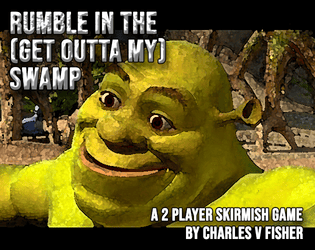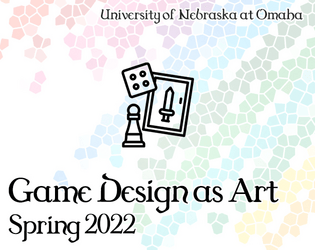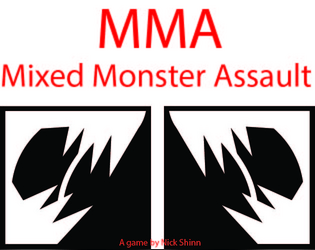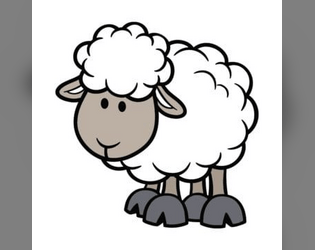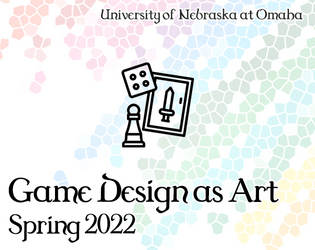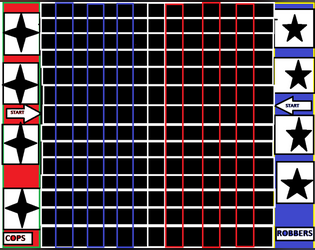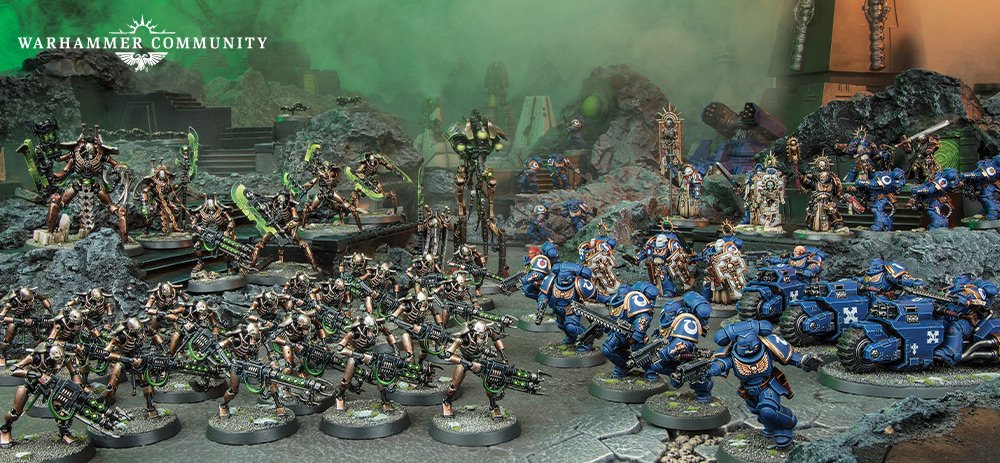
This jam is now over. It ran from 2022-03-31 05:00:00 to 2022-05-10 05:00:00. View 15 entries
"Create a contemporary tabletop wargame that focuses on the nature of simplified-simulation through the development of a sport or combat game in a space-and-component-restricted format."
THEME:
"Dreams"
(Your project is required to connect in some way to the above theme in any way you may be inspired to do so.)
100% OPTIONAL Challenges for Inspiration:
"I'd buy that for a dollar!" - Your game is designed around and can be played with toys, figures, and supplies sourced from a low-cost retail outlet for less than $30. In addition to your rules you should include purchase links to a physical store's website or online shopping link and an expected total cost.
"Very Sporting" - Your game uses the basic outline of a team-based sporting event, either historical or contemporary, and applies it to the tabletop playspace using toy minifigures and a map of the field. The rules may change, but the experience should be clearly identifiable as the sport your game is based on.
"I left them at home" - Your game doesn't use dice of any kind for any gameplay engagement or conflict resolution.
CLARITY OF ABSOLUTE REQUIREMENTS:
- Gameplay revolves around the simulation of combat or sport between at least 2 players on a flat surface. Movement does not rely on a predefined board, grid, or locked-motion layout even if gameplay takes place within the boundaries of a field-type arena.
- Each player is responsible for between 4 and 10 figures representing their team or units. There are at least 2 different kinds of units each figure may represent, and each has a unique skillset, rules of action, and strategic value to the game for the player.All components are represented within print-and-play documents in addition to guidance for commercial acquisition.
- The game provides rules, outlines, or guidance for the layout of terrain on the area of play, or aids players in the preparation of a field-of-play. All components are represented within print-and-play documents in addition to guidance for commercial acquisition.
- All figures and terrain necessary to play the game are submitted as a single multi-page printable pdf with 1/2" margins that players can cut out and use for the game. Submitted as a standalone pdf file within the .zip folder.
*****
You’ll be using small toys taken from the dollar store and using them as inspiration for a standalone tabletop game that simulates small-scale combat or a version of some field-based sport. Your rules should give life to these toys in terms of how they move on the table, interact with the environment, engage with each other, and ultimately win the conflict that is set up between them. In addition to war and armed conflict, be willing to take time for looking into various sports of the world and thinking about the essential experience of combative conflict between two or more groups. Lacrosse from the first-nations peoples of North America, and the Mayan ball game of pok-a-tok immediately spring to mind.
Your challenge will be to simplify the simulation of the combative experience into something that is accessible and fun on the limited table space and time you’ll be working with. The current Warhammer 40k ruleset is something to look at as a contemporary wargame that has a complicated relationship with hardcore players and newcomers, not merely due to the expense of playing. The complexity of the rules needed to balance combat between titan-scale robots, undead psychic lords, communist geckos, and genetically upended space soldiers is…problematic. Peruse it for IDEAS, but maybe not as an example for best design practices. It also has some of the best art and lore in the industry, so take a peek anyway.
Grim Dark Future is an alternate ruleset that attempts to distill the 40k core experience of shooting, taking cover, and rushing into deadly one-on-one close combat down to its bare essentials. It plays quickly with paper printed unit tokens or existing sci-fi minifigures. Malifaux is another astonishingly streamlined combat experience that gives away the rules and paper components for free. If you want pretty figs, buy the pretty figs, but the game itself stands alone.
*****
The basic setup for a wargame is that players will cover a table in interesting terrain elements, optionally place objectives, then place their unit figures in the starting positions, usually close to the edge of their own side of the table. Sports games may have standard start positions, and combat games might have unique rules for how and where certain figures can start the match. Then, players move their figures around the table and engage in combat or the fulfillment of goals and objectives.
The objective for each player might be to eliminate all opposing forces, or stand on and defend a specific point on the map. Capturing, then returning an item from one place to another is another fun alternative. Points for eliminating opposing units, picking up items, or moving from one side of a field to another may help players make strategy decisions. Limiting the number of rounds or having a strict time limit for play are ways some games keep the pace moving and provide closure to the session.
How and when players move their figures is a BIG decision to make, so try out a few variations early. Some games move either one figure for one figure, like chess, or all your units then all their units in alternating turns. You can play with moving up/down in elevation, and sinuous or curved pathways. Some games may use pre-cut length of string, flexible ruler, or close tape-measures to help with the fact that there isn’t a grid to rely on and terrain objects may require odd movement patterns. If you get to the point of dealing with vehicles such as boats, spaceships, cars, or even horses, strongly consider making them the SOLE component of your experience instead of mixing them with non-vehicular units for sake of clarity and balance.
Once you have movement handled, you’ll need to think about exactly what a figure can do when it stops moving and potentially comes in contact or wants to engage with an opposing figure. Will you focus on melee or close combat where figures have to be in immediate proximity to interact with each other? Might figures have the ability to interact at range such as through arrows or gunfire? Make an early decision on what your essential experience is and the focus of combat-interaction will be in your game. This will be a large part of your simplification decisions and vital towards making something playable and fun. If you want to focus on units tackling one another, or punching each other, adding a unit that can potentially one-shot-eliminate others from across the map without ever engaging at close distance results in a wild alteration of tactics and rules for the game.
Designing and managing ranged combat is a challenge and skill that should not be undertaken lightly in a game you have years to perfect, let alone one you have just a few weeks to complete. Pushing this even further towards magic, explosions, armor, flight, rapid-fire, or other wild shenanigans becomes a workload meant for dedicated system-design teams. While much can be added to the experience, this project is about simplification of what you deem to be essential rather than infinite expansion of an open game system. Stay focused only on what is necessary for your very small experience. If you are going to deal with range, keep it simple and direct. Think more along the lines of a paintball match or archery-tag instead of techy-gun troops in urban or jungle combat.
What you can do to keep the experience spicy is something we learned in the RPG project: make interesting and unique characters. In fact, this is a project requirement. There must be at least two different roles/skillsets represented between the figures on the field. In American football we have the quarterback responsible for throwing the ball, running back that carries it short distances, wide-receivers that can catch a ball in the air, and all the other unique roles that make the game team-focused and exciting. Finding the individual role that each figure fulfills in your game, or special skill that might turn the tide, will be what makes your game unique and worthy of a player’s time.
To help with that clamber for uniqueness, you should try and create or live within a world-setting with a clear era, level of technology, magical or non magical, and serious or silly identity. The divisions of rules in classic wargames comes about by era of human development and the specifics of technology for war at the time. Cave-folk proto-hominid combat and hunting requires very different rules to simulate compared to magical-cyborg aliens in anti-grav ships. Pick something early that is fundamentally interesting to you that can help you make decisions while discovering necessities of the experience.
A big tip here: don’t be afraid of mundane experiences. While we are dealing with open movement and “combat”, every era of human war, magical conflict, or sci-fi rumble has been done to death, and many times better than you may be able to do with limited experience and time. Think small and land the core experience with simple rules in a complex environment rather than stacking complex rules of a complex real-world experience in a complex environment. Could you make a miniature tabletop dodgeball, tag, or other playground experience rather than rehashing naval combat between Spanish and English flagships on choppy seas? One, I’d kill to play a GOOD mini dodgeball on tabletop, and two: Assassins Creed Black Flag lands the ship combat experience to a T and all I have to do is hit a power button and blast some fools.
This project is ultimately about having fun with a genre that most gamers might not have touched in their lives. It teaches you about handling complex gameplay concepts such as simulation, open movement, and strategy through simplification and the elimination of tangential decisions. Take these skills into all of your game projects and views towards design here on out.
The internal complexity of a tabletop wargame, no matter how simplified, and any hope at “balancing” it for play, is exponentially more difficult than anything we have approached so far. You are strongly advised to work in pairs to split the challenge of design and production up between partners and to be able to actively engage in testing during development. However, if you think you may be unable to commit to working in a partnership for the duration of the project, work alone and focus on scaling the project to your capabilities.
Submissions(15)
No submissions match your filter




